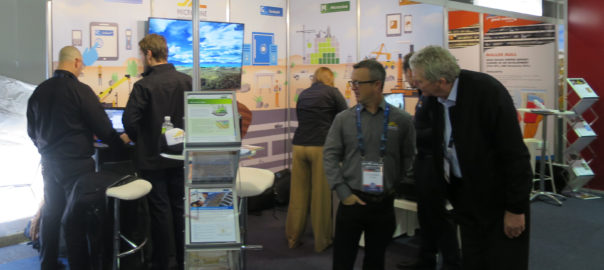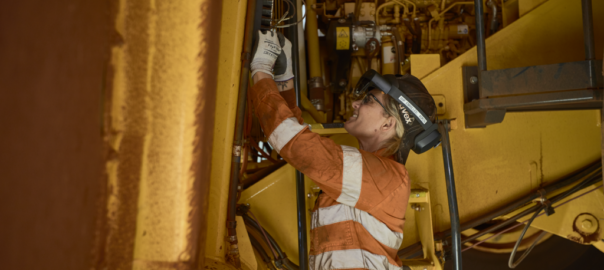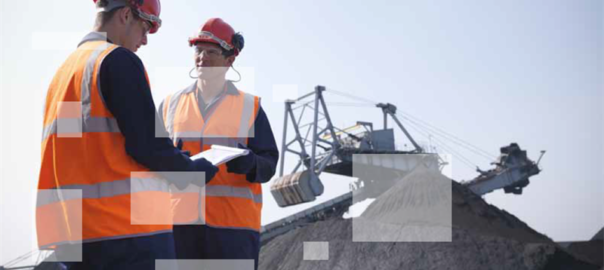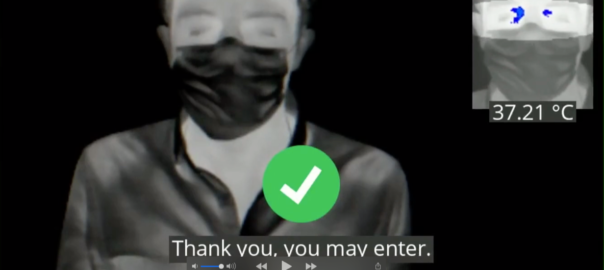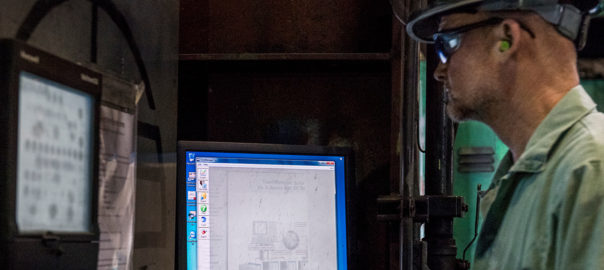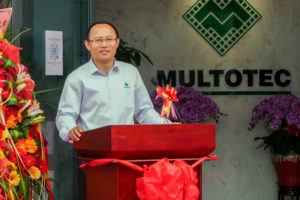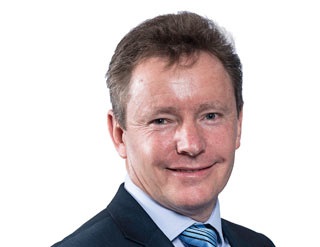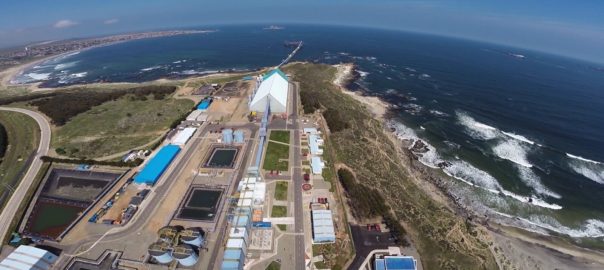With Western Australia one of MICROMINE’s key markets for its Micromine and Pitram products, it is hardly surprising the software leader chose this week’s Diggers & Dealers Mining Forum in Kalgoorlie to reveal a host of new updates for the 3D modelling and mine design/mine production and fleet tracking solutions.
Across the company’s product suite, MICROMINE has been readily engaging with customers throughout the world, with users providing feedback to form its product roadmaps.
One of the results of this consultation process is a move to a six-monthly release cycle to enable its software to grow and adapt with clients’ operations.
Another is providing networking options to expand usage of its software across a wider number of users – the free Micromine Effects reader enabling anyone to view, share and interrogate Micromine output files without needing access to a full software licence.
“We’ve also introduced subscription offerings which our customers have quickly adopted because they provide a flexible and scalable option for large teams to access more functionality across our product suite, with less upfront cost compared to the traditional perpetual model,” Adam Brew, MICROMINE Australia Manager, told IM.
Shifting any capex item to the opex column is bound to go down well with the mining community, as MICROMINE has shown.
Having occurred in August 2019, the move led to almost nine months straight of subscription-only sales, according to Brew. “It surpassed our expectations,” he said. “The ability to have a subscription model allowed us to then launch the Free April campaign.”
The “Free April” campaign – which saw MICROMINE offer miners complimentary access to its general mining Micromine package during April as COVID-19 started to bite – led to around 4,000 new people interacting with the software, according to Brew.
MICROMINE has been busy on updates during the pandemic, but it has also delivered its first fully remote implementation of Pitram at a mine operation in Greece, leveraging the experience from its global Pitram support desk to fully deploy a Pitram FMS and Material Management solution.
This Greek project is well advanced with Pitram playing a crucial role in a major refurbishment and expansion of existing operations. The solution at the mine is aimed at helping improve development and production mining cycles; accurately track materials from source to processing; provide Online Analytical Processing reporting and analysis; enhance reactions to, and minimise the impact of, unplanned events; and increase equipment availability and utilisation.
Yet, those attending the MICROMINE booth at Diggers & Dealers this week will have even more to talk about.
Something new
“Micromine 2021 is scheduled for release later this year and attendees of Diggers and Dealers will be the first to get a pre-release reveal of our flagship software offering,” Brew said.
Australia, in particular, has bucked global trends in terms of exploration expenditure, and the Micromine value proposition has been central to the company capitalising on this resurgence in exploration activities, according to Brew.
It is no wonder then that the company has put significant efforts into updating its flagship product.
“The first thing clients will notice is a completely redesigned user interface that provides easier access to the critical functions of the software, transforming the whole user experience with responsive design and efficient workflows,” Brew said.
Delivering this transformation has been a focal point for the business for more than a year, according to Brew, with developers reviewing customer requests most commonly received from the support team, analysing how users work with the array of Micromine functionality, and modelling interface scenarios to optimise the presentation of key functions within the software.
“By providing easier access to these functions and a smart interface that responds contextually, Micromine 2021 anticipates and supports workflows in a genuinely intuitive way,” Brew said.
The Micromine update has more than a new look.
It also includes new tools for importing and working with as-drilled drill-hole data, Brew explains.
These provide faster and more intuitive control over underground ring drill and blast design – also a focus of the earlier Micromine 2020.5 update – enabling designs to quickly adapt to changes in the field, identifying drilling inefficiencies and improving design protocols.
“We are also introducing intuitive tools that mirror the terrain of a blast face and speed up the process of creating blast-hole patterns within the bounds of the dig block,” Brew said. “Users will be able to accommodate polygons/blast masters of varying shapes, reducing the need for manual adjustment.”
The new grade control capabilities in Micromine 2021 provide dynamic updating of grade control reports to enable faster design preparation and reserve evaluation, according to Brew. This can allow miners to explore variations in dig block configuration and evaluate the ramifications of design changes on the grade – a function bound to appeal to opex-focused companies mining complex orebodies.
An integrated scheduler, meanwhile, enables planners to build and visualise an optimised schedule through configurable templates, scripting capabilities and scenarios built from real-world constraints, Brew said.
While the new and intuitive interface is likely to capture the immediate attention of users, MICROMINE has evidently not scrimped on updated and upgraded features.
Getting to the core
With the release of Pitram 4.17 earlier this year, there were improvements to the Materials Movement and Shift Planner modules, but Pitram 5, to be released later this year, goes above and beyond that.
“Stockpile management is now part of your end-to-end process and not managed as isolated assets within Pitram,” Brew says of Pitram 5. Geologists can work with data up- and down-stream to manage and react to material mismatches. Such data validation and accuracy is key to the value proposition Pitram drives in MICROMINE’s global implementations, according to Brew.
“Pitram is at the core of any mining operations ecosystem,” he said. “Our ability to accurately track Last Source, Destination Moved, Quantity and Grade as well as set individual depletion models across the various stockpiles across the mine, makes it a more flexible offering while maintaining data integrity.”
This near real-time tracking ability has previously failed on occasion from connectivity issues.
Not anymore.
“Pitram 5 is a huge leap forward in how we deploy our solution from a connectivity point of view,” Brew said. “Many of the mines we work with have limited or varying degrees of underground Wi-Fi and communications available. Our Peer to Peer solution bridges the gap where communication back to the server is not available at the face, for example.”
The Peer to Peer software can be installed on light vehicles which move around the mine encountering heavy equipment and collecting data in areas of no network coverage before moving back to a Wi-Fi-enabled area to sync the data back to the main server and into the control room. This allows miners developing new areas of their operation to keep up the communications flow without the need to immediately install or expand a communication network.
Such a solution has been successfully deployed at several sites globally, with Independence Group’s Nova nickel operation, in Western Australia, being the company’s reference site.
“Additionally, we have driven more R&D in how we can better leverage our Pitram Restful Integration Service (PRIS) to communicate shift planning data back to the shift bosses and mine managers in near real time,” Brew said.
The free Pitram Connect application, downloadable from the Apple or Google Play store, will show users real-time shift data as well as give them the ability to make updates to the shift, such as equipment or location allocations.
“Our ability to deliver on short interval control is a common requirement we are measured against and providing this planner to key users underground unlocks considerable value for an operation,” Brew said.
Pitram 5’s machine-learning update in the 2021 release leverages the company’s learnings from earlier deployments at some Central Asia mines.
“Utilising the processes of computer vision and deep machine learning, on-board cameras are placed on loaders to track variables such as loading time, hauling time, dumping time and travelling empty time,” he said. “The video feed is processed on the Pitram vehicle computer edge device, with the extracted information then transferred to Pitram servers for processing.”
Reflecting on the product updates and more than six months of pandemic-affected upheaval, Brew concluded: “Our business is extremely fortunate to have powered on through the COVID-19 pandemic, and we’ve worked hard to maintain our renowned ability to work, support and deploy our solutions remotely.
“Diggers & Dealers is the pre-eminent event for the Australian region of our business, with representation from all our customers, so it represents a fantastic opportunity to show how we continue to drive value to our existing customer base as well as connect with new customers.”







